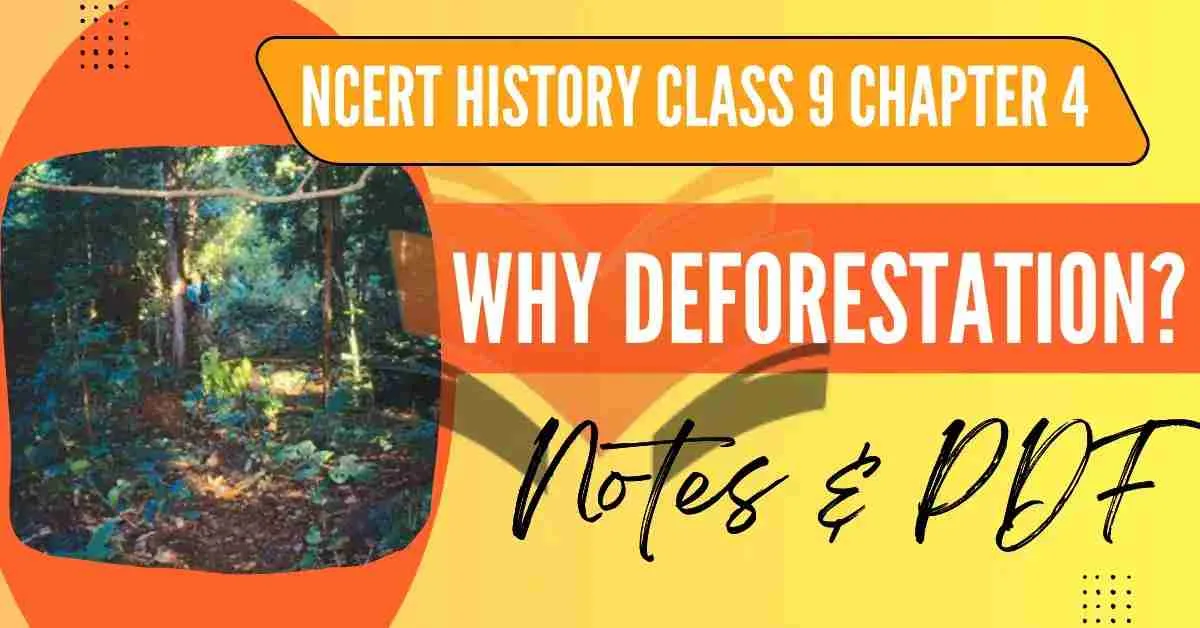Why Deforestation? – Concept & Notes PDF
Topic & sub-topics covered: Why Deforestation? and MCQs Questions: Forest Society and Colonialism (All single detail notes are exam-oriented).
We have discussed in-depth and exam-oriented pointers that can be asked in the board exam of class 9th about the “Why Deforestation?” from the NCERT History notes for class 9th chapter 4th “Forest Society and Colonialism“.
Download the NCERT History for Class 9th Chapter 4 Forest Society and Colonialism Notes PDF
NCERT History for Class 9th Chapter 4_ Forest Society and Colonialism Notes & MCQ’s Question-Answer
Preparing for Class 9 History? Chapter 4 Forest Society and Colonialism is an important topic that explains how colonial rule transformed forests, the lives of people who depended on them, and the environment itself. To make your preparation easier, we’ve created well-structured notes that highlight key events, important terms, and exam-oriented points in a simple way. With these notes, you can revise quickly and understand concepts like shifting cultivation, colonial policies, and resistance by forest communities. Download the NCERT History Class 9 Chapter 4 Forest Society and Colonialism Notes PDF and get everything you need for clear, focused exam preparation in one place.
Why Deforestation?
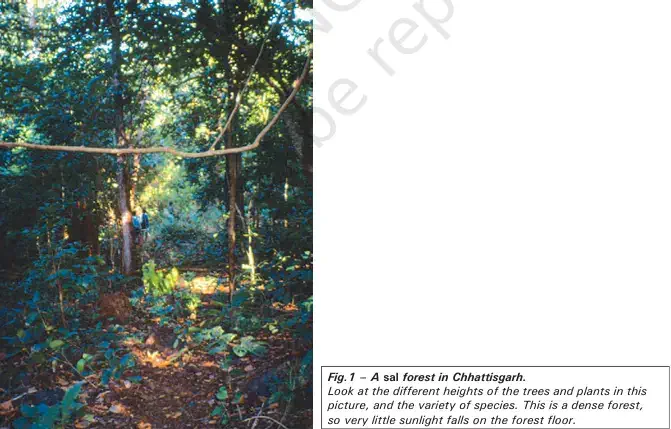
- Definition: The disappearance of forests is called deforestation.
- Not a recent problem: Deforestation began many centuries ago.
- Colonial period impact: Under colonial rule, deforestation became systematic and extensive.
- Next focus: Causes of deforestation in India will be studied in detail.
Land to be Improved
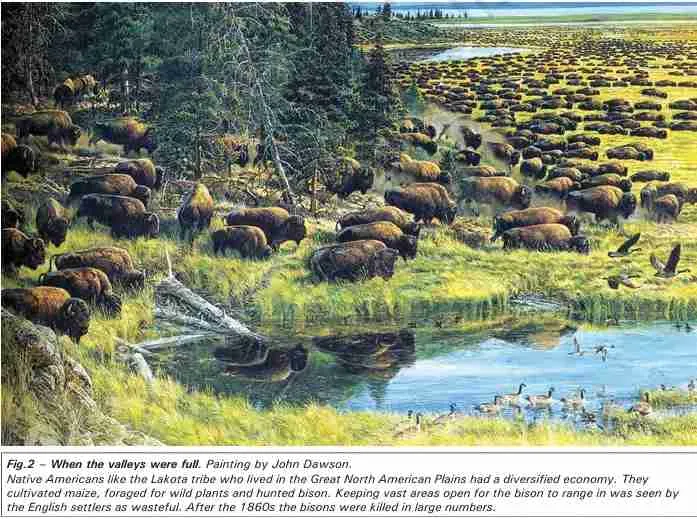
1. Extent of Cultivation in India:
- In 1600, about one-sixth of India’s landmass was under cultivation.
- At present, about half of India’s landmass is under cultivation.
2. Causes of Expansion of Cultivation:
- Population Growth: As population increased, demand for food went up.
- Peasants’ Efforts: Peasants extended cultivation by clearing forests and breaking new land.
- Colonial Period Expansion: Cultivation expanded rapidly in colonial times.
3. Reasons for Colonial Encouragement:
- Commercial Crops Promotion:
a. British encouraged production of jute, sugar, wheat, and cotton.
b. Demand rose in 19th century Europe due to:
i. Need for foodgrains (to feed growing urban population).
ii. Need for raw materials (for industrial production). - Forests Viewed as Unproductive:
a. Colonial state considered forests as wilderness.
b. Aim: Convert forests into cultivated land to produce crops, yield revenue, and increase state income. - Statistical Data
a. Between 1880 and 1920, cultivated area increased by 6.7 million hectares.
4. Critical Note:
- Expansion of cultivation is usually seen as progress, but it required clearing forests (leading to deforestation).
Box 1: Land and Cultivation – Australian Example
- Absence of cultivation ≠ uninhabited land.
- White settlers in Australia claimed it was terra nullius (empty land).
- In reality:
a. Aboriginal communities already lived there with clearly demarcated territories.
b. Aboriginal guides showed settlers the landscape using aboriginal tracks.
c. Ngarrindjeri people organized land around the symbolic body of their ancestor Ngurunderi.
d. Their land included five environments:
i. Salt water
ii. Riverine tracts
iii. Lakes
iv. Bush
v. Desert plains
e. Each environment fulfilled different socio-economic needs.
Source A
1. Colonial Justification for Conquest:
- Colonisers believed uncultivated land must be taken over and “improved.”
- This idea was used as a justification for conquest and colonisation worldwide.
- It reflected the colonial notion that indigenous owners did not understand the “value” of land.
2. Example from Central America:
- In 1896, American writer Richard Harding expressed colonial views:
a. Claimed Central Americans were like “semi-barbarians” in a “beautifully furnished house.”
b. Suggested they failed to understand the use and comfort of their own land.
c. Implied that land should be taken by those willing to “turn it to account” (exploit it for profit).
3. United Fruit Company:
- Founded in 1899 (three years after Harding’s statement).
- Grew bananas on an industrial scale in Central America.
- Example of foreign economic control over local resources.
4. Impact on Central America:
- The United Fruit Company gained enormous power over Central American governments.
- These governments became dependent on the company, earning the nickname “Banana Republics.”
- Shows how economic exploitation often led to political dominance.
5. Broader Significance:
- This source highlights:
a. The colonial mindset of superiority over local populations.
b. How economic companies acted as extensions of colonial power.
c. The global pattern of using the idea of “improving land” to legitimize colonisation.
Sleepers on the Tracks
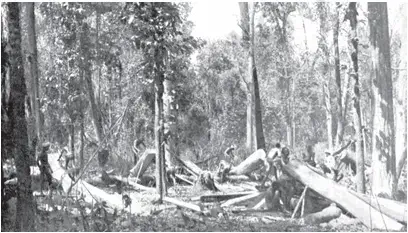
1. Timber Crisis in England:
- By the early 19th century, oak forests in England were rapidly disappearing.
- This created a timber supply crisis for the Royal Navy (needed strong, durable wood for shipbuilding).
- Without timber, imperial power and naval dominance could not be maintained.
2. Shift to Indian Forests:
- From the 1820s, search parties were sent to India to explore timber resources.
- Within a decade, trees were felled on a massive scale, and huge quantities of timber were exported to England.
3. Railways and Timber Demand:
- The spread of railways from the 1850s created new demand for wood:
a. Fuel for locomotives.
b. Sleepers (wooden planks to hold railway tracks). - Each mile of track required 1,760–2,000 sleepers.
4. Expansion of Railway Tracks:
- By 1890, India had 25,500 km of railway tracks.
- By 1946, the track length had expanded to over 765,000 km.
- Massive railway expansion → increasing deforestation.
5. Madras Presidency Example:
- As early as the 1850s, in Madras Presidency alone, about 35,000 trees were cut every year for railway sleepers.
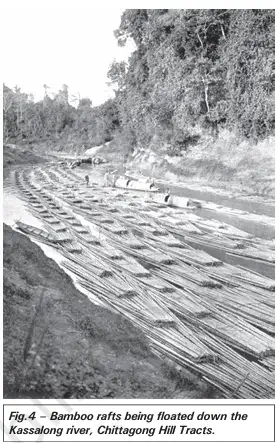
6. Contract System:
- The government gave contracts to individuals to supply timber.
- Contractors engaged in indiscriminate cutting of trees.
- Forests near railway tracks disappeared rapidly.
Source B
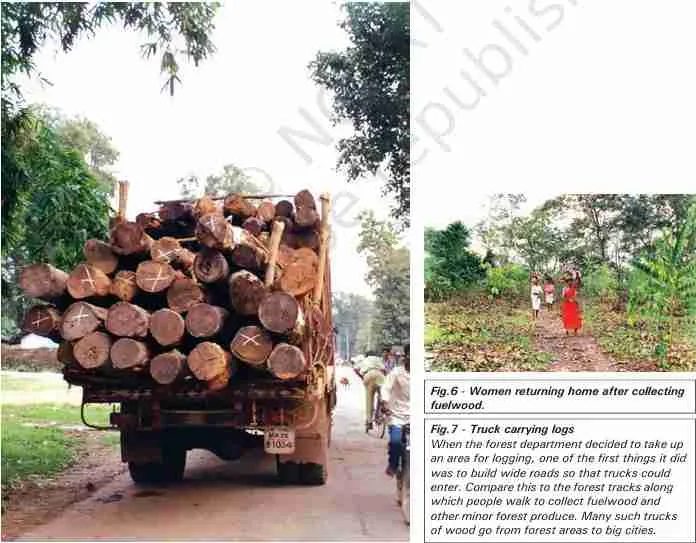
1. Indus Valley Railway Project:
- Planned between Multan and Sukkur (≈ 300 miles).
- Required: 600,000 sleepers (size: 10 ft × 10 in × 5 in).
- Total timber needed: ≈ 2 million cubic feet.
2. Fuel Demand:
- Locomotives ran on wood fuel.
- Estimated annual demand: 219,000 maunds of fuel wood.
- Extra fuel also required for brick-burning during railway construction.
3. Sources of Timber and Fuel:
- Sleepers mainly supplied from Sind Forests.
- Fuel wood from tamarisk and jhand forests (Sind + Punjab).
4. Northern State Railway:
- Planned between Lahore and Multan.
- Estimated requirement: 2,200,000 sleepers.
5. Exam-Ready Insights:
- Railways were essential for colonial trade and troop movement.
- But they caused massive deforestation due to demand for sleepers and fuel.
- The contract system promoted unchecked exploitation of forests.
- By late 19th and early 20th century, Indian forests became central to sustaining colonial expansion.
Plantations

1. Deforestation for Plantations:
- Large areas of natural forests were cleared under colonial rule.
- Main purpose: to make way for plantations of tea, coffee, and rubber.
2. Reason for Expansion:
- The clearing of forests was driven by Europe’s growing demand for these commodities.
- Plantations ensured a steady supply of tea, coffee, and rubber for European markets.
3. Role of Colonial Government:
- The colonial government took control over forest lands.
- It allotted vast areas at cheap rates to European planters.
4. Plantation Development:
- The forest lands were enclosed and cleared.
- After clearance, they were converted into plantation estates (especially tea & coffee).
5. Key Exam Insights:
- Plantations were a major cause of deforestation in India during colonial times.
- Forests were treated as economic resources for global trade rather than as natural ecosystems.
- Local people lost access to forest land once it was enclosed for plantations.
New words
- Sleepers – Wooden planks laid across railway tracks; they hold the tracks in position.
Next & Previous Topics of NCERT/CBSE History Class 9 Chapter 4: Forest Society and Colonialism
| Topics No. | Topics Name |
|---|---|
| 1 | Why Deforestation? |
| 2 | The Rise of Commercial Forestry |
| 3 | Rebellion in the Forest |
| 4 | Forest Transformations in Java |
MCQs on NCERT History Class 9 Chapter 4 Topic – Why Deforestation?
Here are the top exam-oriented MCQ-type questions on “Why Deforestation?” that you should prepare for your CBSE or state board exams:
Question 1. What is the disappearance of forests called?
a) Afforestation
b) Deforestation
c) Desertification
d) Plantation
Answer: b) Deforestation
Question 2. When did the process of deforestation become systematic and extensive in India?
a) During Mughal rule
b) Under colonial rule
c) After independence
d) During ancient times
Answer: b) Under colonial rule
Question 3. In 1600, what fraction of India’s landmass was under cultivation?
a) One-fourth
b) One-sixth
c) One-half
d) One-eighth
Answer: b) One-sixth
Question 4. At present, approximately how much of India’s landmass is under cultivation?
a) One-third
b) One-fourth
c) Half
d) Two-thirds
Answer: c) Half
Question 5. Why did peasants extend cultivation by clearing forests?
a) To build industries
b) Due to increased population and food demand
c) For railway construction
d) For military camps
Answer: b) Due to increased population and food demand
Question 6. Which crops were encouraged by the British for commercial production in India?
a) Tea, coffee, rubber
b) Rice, pulses, maize
c) Jute, sugar, wheat, cotton
d) Barley, potato, oilseeds
Answer: c) Jute, sugar, wheat, cotton
Question 7. Why was there a demand for foodgrains and raw materials in 19th-century Europe?
a) To feed soldiers only
b) To support growing urban population and industries
c) To export them to colonies
d) For scientific experiments
Answer: b) To support growing urban population and industries
Question 8. How did the colonial state view forests in the early 19th century?
a) As sacred lands
b) As unproductive wilderness
c) As sources of beauty
d) As places of cultural heritage
Answer: b) As unproductive wilderness
Question 9. Between 1880 and 1920, by how much did the cultivated area increase in India?
a) 2.7 million hectares
b) 6.7 million hectares
c) 10.7 million hectares
d) 12.7 million hectares
Answer: b) 6.7 million hectares
Question 10. What did colonisers consider as a sign of progress?
a) Expansion of forests
b) Expansion of cultivation
c) Expansion of industries
d) Expansion of education
Answer: b) Expansion of cultivation
Question 11. What does “terra nullius” mean?
a) Empty land
b) Fertile land
c) Industrial land
d) Sacred land
Answer: a) Empty land
Question 12. Which community in Australia plotted their land along the symbolic body of Ngurunderi?
a) Maori
b) Ngarrindjeri
c) Aborigines of Tasmania
d) Zulus
Answer: b) Ngarrindjeri
Question 13. The Ngarrindjeri people’s territory included how many different environments?
a) Three
b) Four
c) Five
d) Six
Answer: c) Five
Question 14. What idea did colonisers use to justify conquest of land worldwide?
a) Land should be left wild
b) Uncultivated land must be improved
c) Land belongs only to locals
d) Forests are to be preserved
Answer: b) Uncultivated land must be improved
Question 15. Who wrote in 1896 about “improving unimproved lands” in Central America?
a) David Spurr
b) Richard Harding
c) E.P. Stebbing
d) Winston Churchill
Answer: b) Richard Harding
Question 16. Which company founded in 1899 grew bananas on an industrial scale in Central America?
a) East India Company
b) United Fruit Company
c) Dutch East India Company
d) Anglo-American Plantation Company
Answer: b) United Fruit Company
Question 17. The term “Banana Republics” referred to which region?
a) Australia
b) Africa
c) Central America
d) South Asia
Answer: c) Central America
Question 18. Why were oak forests in England disappearing by the early 19th century?
a) For agriculture
b) For timber supply to the Royal Navy
c) For plantations
d) For railway expansion in England
Answer: b) For timber supply to the Royal Navy
Question 19. Why did British search parties explore India’s forests in the 1820s?
a) For diamonds
b) For spices
c) For timber supply
d) For agricultural land
Answer: c) For timber supply
Question 20. What new demand for timber arose with the spread of railways from the 1850s?
a) Furniture production
b) Construction of temples
c) Sleepers and fuel wood
d) Shipbuilding
Answer: c) Sleepers and fuel wood
Question 21. How many sleepers were required for each mile of railway track?
a) 760–1000
b) 1,760–2,000
c) 2,760–3,000
d) 3,500–4,000
Answer: b) 1,760–2,000
Question 22. By 1890, how much railway track had been laid in India?
a) 15,000 km
b) 25,500 km
c) 50,000 km
d) 75,000 km
Answer: b) 25,500 km
Question 23. By 1946, what was the length of railway tracks in India?
a) 265,000 km
b) 565,000 km
c) 765,000 km
d) 865,000 km
Answer: c) 765,000 km
Question 24. In the Madras Presidency alone, how many trees were cut annually for railway sleepers in the 1850s?
a) 15,000
b) 25,000
c) 35,000
d) 45,000
Answer: c) 35,000
Question 25. How many sleepers were required for the Indus Valley Railway line between Multan and Sukkur?
a) 200,000
b) 400,000
c) 600,000
d) 800,000
Answer: c) 600,000
Question 26. How much wood fuel was estimated annually for locomotives according to Source B?
a) 119,000 maunds
b) 219,000 maunds
c) 319,000 maunds
d) 419,000 maunds
Answer: b) 219,000 maunds
Question 27. From which forests were most of the sleepers for the Indus Valley Railway expected to come?
a) Assam forests
b) Sind forests
c) Nilgiri forests
d) Madhya Pradesh forests
Answer: b) Sind forests
Question 28. Large areas of natural forests were cleared for which plantations?
a) Tea, coffee, rubber
b) Rice, wheat, maize
c) Jute, cotton, sugar
d) Coconut, arecanut, tobacco
Answer: a) Tea, coffee, rubber
Question 29. Who were given vast areas of forest land at cheap rates for plantation?
a) Indian peasants
b) European planters
c) Zamindars
d) Local tribals
Answer: b) European planters
Question 30. What happened to forests taken over for plantations?
a) They were protected
b) They were enclosed, cleared, and planted with tea/coffee
c) They were converted into sanctuaries
d) They were used for shipbuilding
Answer: b) They were enclosed, cleared, and planted with tea/coffee

